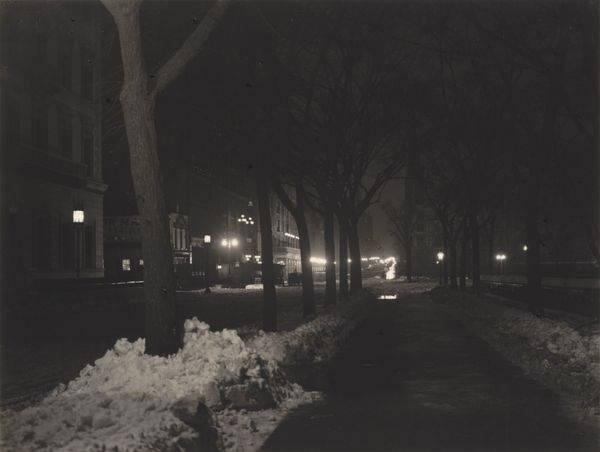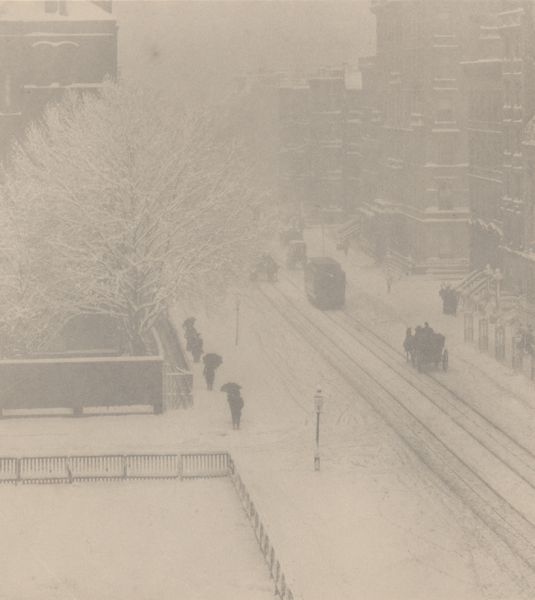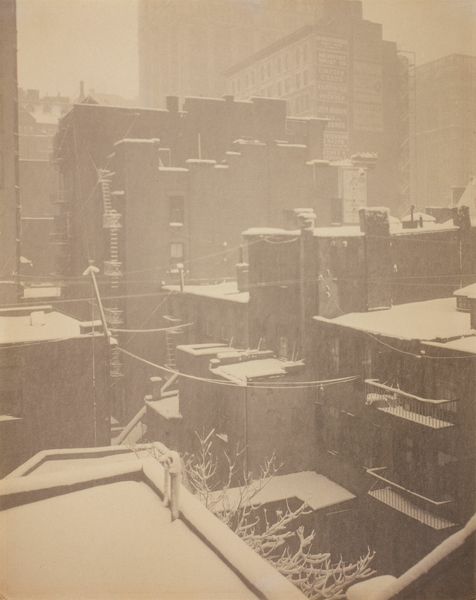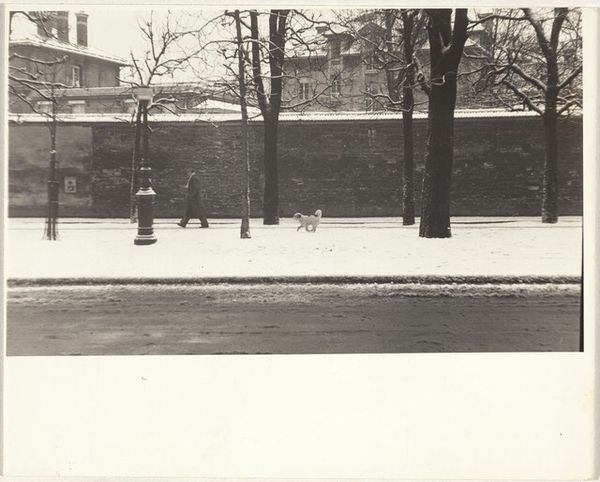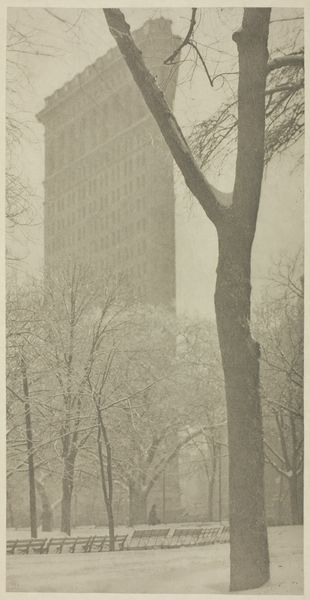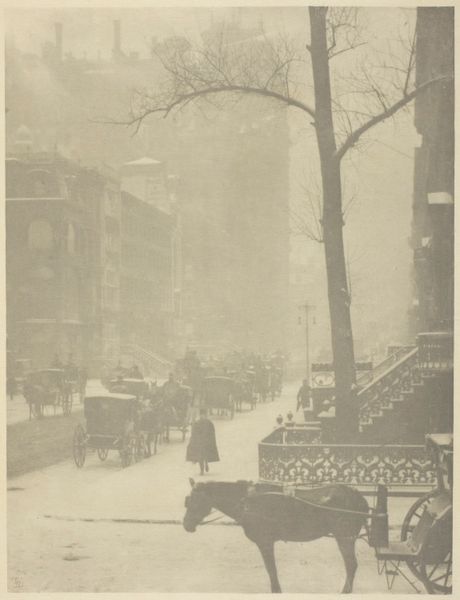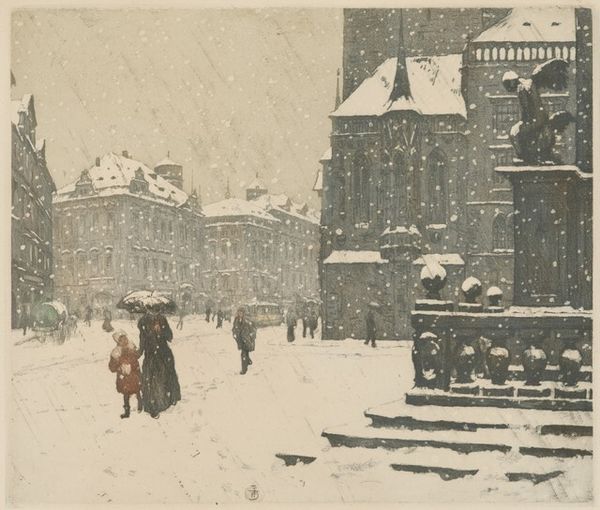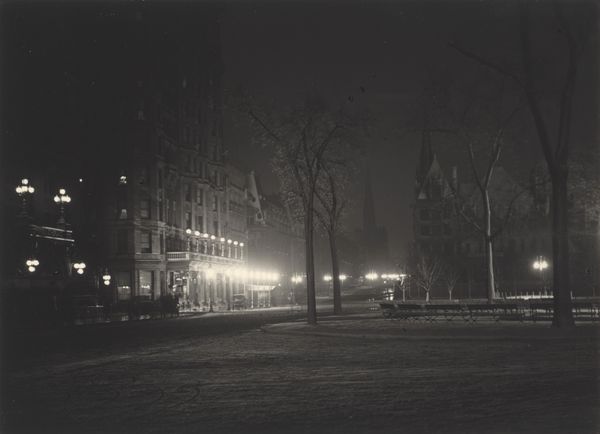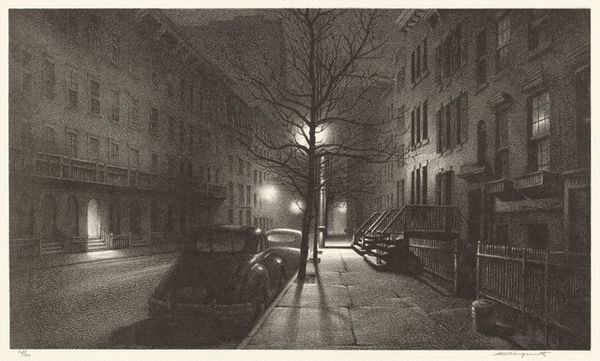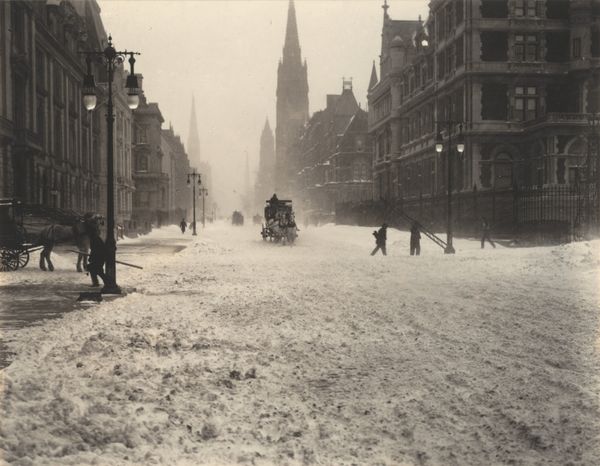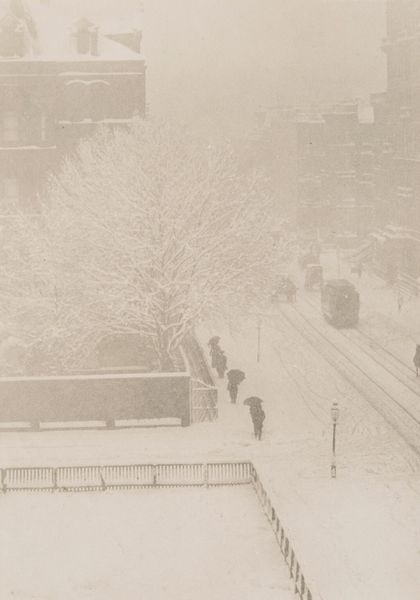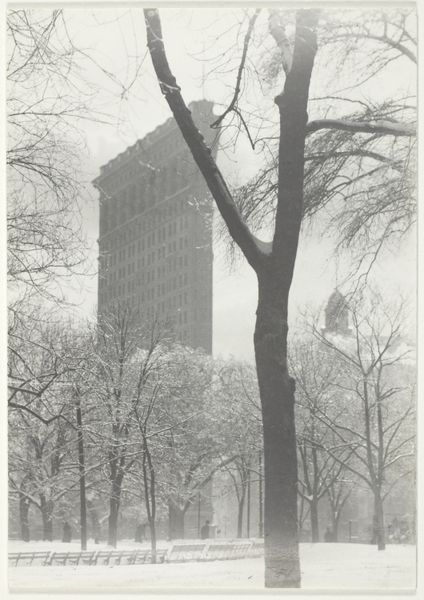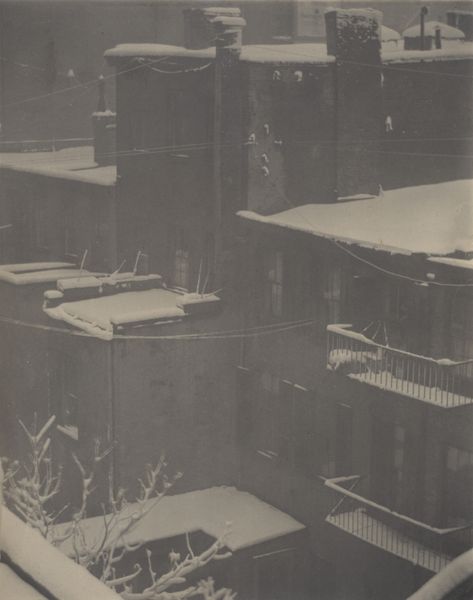
print, graphite
#
black and white photography
# print
#
street-photography
#
monochrome photography
#
graphite
#
cityscape
#
modernism
#
realism
#
monochrome
Dimensions: image: 25.72 × 40.32 cm (10 1/8 × 15 7/8 in.)
Copyright: National Gallery of Art: CC0 1.0
Curator: This is Stow Wengenroth's "Lower Fifth Avenue," a graphite print from 1959. I find it really evocative; it almost feels like a scene from a classic film. What are your initial impressions? Editor: I'm struck by how incredibly detailed it is, especially given it's a print. The monochrome palette definitely contributes to the feeling you described, almost noir-ish. With the snow blanketing everything, it seems very serene, almost melancholy. How do you interpret the work's setting and historical context? Curator: The choice to depict a city street in winter, rendered with such precision in graphite, points to several interesting tensions. The modernism style is a celebration of the modern metropolis, yet Wengenroth presents it as strangely depopulated, softened by snow. Note that most people are walking, and many of those who aren't are sitting inside stationary automobiles. How do those qualities make the viewer feel about modernity? Editor: It's like he's romanticizing a harsh reality. Even with the streetlights, the darkness emphasizes the loneliness and isolation within a large city, although you feel protected within the structures. The realism feels at odds with the slightly unsettling mood it conveys. Was this a common approach for artists at the time? Curator: Absolutely. The 1950s saw a growing ambivalence towards urban life. On the one hand, there was this post-war optimism and a celebration of American progress, but also anxieties about conformity and alienation. Artists like Wengenroth often used realism to subtly critique the dehumanizing aspects of modern society. The ubiquity of automobiles is definitely meant to emphasize isolation over connection. Editor: So, in a way, this seemingly straightforward cityscape is a commentary on the social and political climate of the time? Curator: Precisely. It's about how institutions and societal structures impact individual experience and shape our understanding of place. Editor: That's fascinating. I'd never considered the socio-political subtext. Thank you for illuminating those details. Curator: My pleasure. It is the kind of piece that offers deeper meanings the longer you engage with it. I am glad to share the experience.
Comments
No comments
Be the first to comment and join the conversation on the ultimate creative platform.
